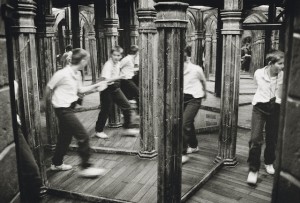Google Glasses Are Ugly But Important
They are ugly. They are definitely not “cutting edge†hardware. They are so very limited in their “usabilityâ€, but none of that really matters. They will still likely replace your current smartphone’s interface over the next five years. They are the “Google Glasses†and you should probably get used to seeing people wearing them.
Why? Because despite their rather primitive state at present, they fulfill a need, and Google is betting that its partners in the android market will find ways to exploit that need. It’s a risk, a search engine company stepping into the manufacturing market, but it’s one they took before and it paid off in spades.
And yes, I am referring to the Google Phone, and despite what you might think, it was one of the single most successful “failures†in history. You see, Google never had any intention of the phone actually being a “success.†It had only one purpose alone and it succeeded brilliantly. Almost overnight, Google shattered the iPhone monopoly on smartphones, and it has been steadily taking that captive market away from them since. That was its sole purpose. In fact, they could have given the phones away and had an even huger success, but they still turned the market on its ear by blowing a hole in Apple’s walled garden that was bigger than what the orcs did to Helm’s Deep. Without Google’s “stupid risk†and “utter failureâ€, the massive Android market place would not exist.
In much the same way, Google has been slowly building towards a long term goal I believe they have been pursuing for more than a decade. With the Google glasses reveal, I am more certain than ever that Google’s aim is the creation of the “Mirrorworldâ€Â I have written about in the past.. They already have an overwhelming majority of the necessary technical hurdles surpassed with the various software packages they have released, such as Google Earth, Google maps, their suite of 3d model building software, and sundry other projects, such as Streetview. I discussed a lot of this in the very first set of articles I wrote for H+ magazine, Virtualization part 1, part 2, and part 3, and this latest glimpse into Google’s plans is simply another piece of the puzzle being put in place.
And you will want to use these glasses. It’s going to look like a perfect solution to a rather large problem, texting while driving. Combined with speech to text apps, these glasses would offer perfect hand’s free texting, not to mention cellular calls. Toss in a GPS map overlay app, and you have a simple way to use Google glasses as a HUD. No more taking your eyes off the road for long seconds to look at the GPS. No fumbling with the phone while driving. No scrunching your neck to try and hold a phone to your ear. With the increasing ability to manufacture displays of nearly any size on flexible plastic, and advances in making plastic electronics, it’s pretty reasonable to expect that in a few years, the cost of a pair of VR lenses with all of the capabilities I described in my article on Quantum Dots will likely fall below the cost of a current smartphone, while far exceeding them in processing power and abilities. This is the gamble Google is taking. It is betting that just like the Google Phone, Google Glasses will create the market. Just the proof that Google is working on VR lenses will inspire other manufactures to enter the market with their own offerings, and push the envelope on the underlying technology.
And Google will be right there, already waiting with dozens of tools and offerings to make those manufacturers jobs easier. And maybe people will talk about how Google had another miserable failure.


